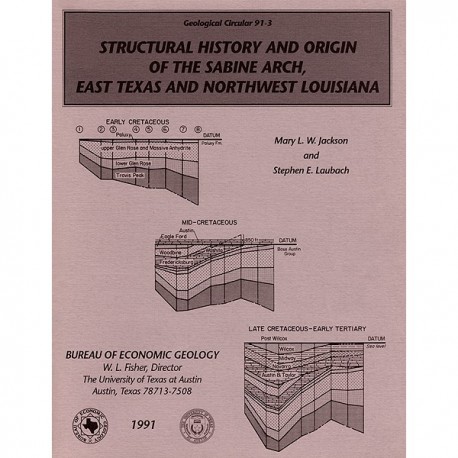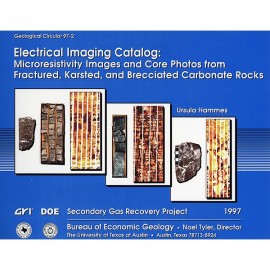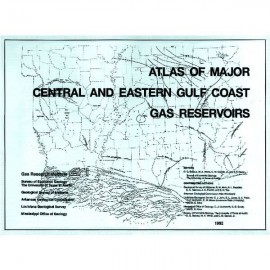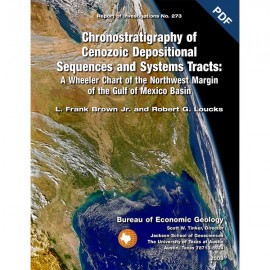Geological Circulars
-
Books & Reports
- Reports of Investigations
- Guidebooks
- Udden Series
- Geological Circulars
- Down To Earth
- Atlases of Major Oil and Gas Reservoirs
- Texas Memorial Museum Publications
- Environmental Geologic Atlas of the Texas Coastal Zone
- Mineral Resource Circulars
- Other Reports
- Seminars and Workshops
- Handbooks
- Submerged Lands of Texas
- Symposia
- Annual Reports
- Open File Reports
-
Maps & Cross Sections
- Thematic Maps
- Miscellaneous Maps, Charts & Sections
- Geologic Atlas of Texas
- STATEMAP Project Maps
- Geologic Quadrangle Maps
- Cross Sections
- Highway Geology Map
- Energy and Mineral Resource Maps
- Shoreline Change and Other Posters
- Wilcox Group, East Texas, Geological / Hydrological Folios
- Bouguer Gravity Atlas of Texas
- River Basin Regional Studies
- Featured Maps
- Posters
- Teachers & the Public
-
Geological Society Publications
- Gulf Coast Association of Geological Societies
- Alabama Geological Society
- Austin Geological Society
- Corpus Christi Geological Society
- Houston Geological Society
- Lafayette Geological Society
- Mississippi Geological Society
- New Orleans Geological Society
- South Texas Geological Society
- GCS SEPM Publications
- Historic BEG & UT Series
Structural History and Origin of the Sabine Arch, East Texas and NW Louisiana
GC9103
For a downloadable, digital version: GC9103D.
GC9103. Structural History and Origin of the Sabine Arch, East Texas and Northwest Louisiana, by M.L.W. Jackson and S. E. Laubach. 47 p., 26 figs., 2 tables, 1991. ISSN: 0082-3309. Print.
To purchase this publication as a downloadable PDF, please order GC9103D.
ABSTRACT
The Sabine Arch is a large (12,000 mi2 [31,000 km2]), low-amplitude anticline centered on the Texas-Louisiana border. A basement-cored feature that formed in the Jurassic, the arch has been interpreted as (1) a Jurassic horst that persisted throughout the Cretaceous as a topographic relict of rifting, (2) a dome caused by deep-seated Cretaceous plutonism, and (3) a fold caused by regional tectonism. Using regional maps and cross sections derived from approximately 800 well logs, we outlined the depositional history of the arch region, thus documenting arch movement history. These data were then used to test models of the origin of the Sabine Arch. Results of our study support the theory that folding caused the observed structural configuration and stratigraphic relations on the Sabine Arch.
The history of the Sabine Arch began when early Mesozoic fault blocks formed in the area during the opening of the Gulf of Mexico; however, the location of horsts and grabens is difficult to substantiate. Gulf of Mexico basin rifting was followed by erosion and evaporite deposition. The presence of thin salt over the Sabine Arch (compared with thicker salt in adjacent areas) shows that the arch may have been a positive area in the Middle Jurassic, but by the Late Jurassic, before the end of salt deposition, this positive area had subsided. From the Late Jurassic through the late Early Cretaceous the Sabine Arch had minimal topographic expression, forming a submerged platform between the East Texas and North Louisiana Basins.
Mid-Cretaceous movement caused 550 ft (170 m) of uplift on a north-trending, elongated Sabine Arch. After another period of submergence and deposition in the Late Cretaceous and Paleocene, a second episode of arching occurred in the early Eocene. The arch was largely above sea level after this second movement and remains elevated today in response to downwarping on the margin of the Gulf of Mexico.
Cretaceous and Tertiary uplift may have reactivated an earlier positive area to form the Sabine Arch, but the cause of reactivation has not been specified in previous studies. We interpret the Sabine Arch as a fold caused by lateral compression of the Gulf of Mexico basin. Mid-Cretaceous arching is contemporary with thrusting and associated tectonic highlands in the Arizona-Mexico segment of the North American Cordillera, and Eocene arching is coincident with Laramide folding and thrusting. The influence of compressional tectonics in the northern Gulf Coast Basin is consistent with recent geodynamic models that indicate wide zones of foreland and intraplate deformation during orogenesis.
Keywords: compression, Louisiana, mid-Cretaceous, Sabine Arch, tectonics, Texas
Citation
Jackson, M. L. W., and Laubach, S. E., 1991, Structural History and Origin of the Sabine Arch, East Texas and Northwest Louisiana: The University of Texas at Austin, Bureau of Economic Geology, Geological Circular 91-3, 47 p.






